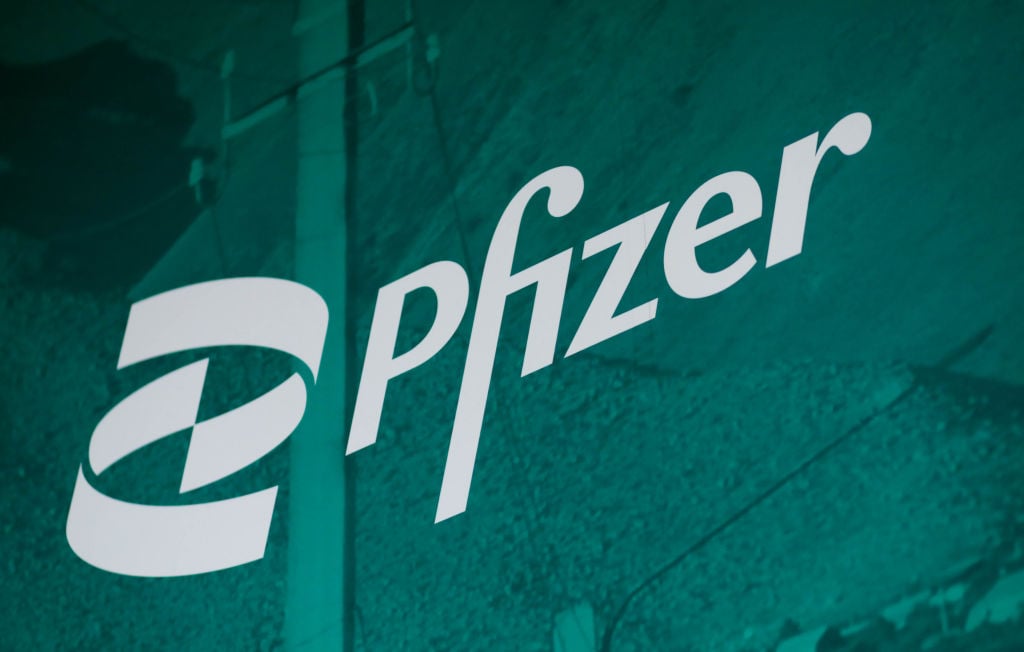Pharma giants Pfizer (PFE 0.82%) and GlaxoSmithKline (GSK +0.00%) share similar visions for the future. Both aim to transform into smaller, nimbler biopharmaceutical outfits focused on high-value R&D. Last year, investors witnessed the strategy begin to take shape at both businesses.

Image source: Getty Images.
Strategic realignment at Glaxo
In August 2019, Pfizer and Glaxo completed the combination of their consumer healthcare businesses into a new joint venture. The unit operates under the GSK Consumer Healthcare name, with Glaxo holding a 68% majority stake. The operation boasts the largest global portfolio of over-the-counter medicines, vitamins, minerals, and supplements.
Glaxo's next move is to spin off GSK Consumer Healthcare into a stand-alone company. Management recently described a two-year program to prepare for the separation that's aimed at improving operating performance -- Glaxo targets about $0.9 billion in annual savings by 2022 (at a conversion rate of £1 to $1.26). Additionally, the company expects one-time costs associated with the separation to range from $750 million to $880 million.
In its year-end earnings report, Glaxo noted an ongoing strategic review of its prescription dermatology business, which posted 2019 sales of $560 million in countries outside the United States. Meanwhile, a recent Bloomberg article reported that Glaxo had hired advisors to sell its antibiotics business. These smaller deals, as well as its $5.1 billion acquisition of oncology company Tesaro at the start of 2019, highlight Glaxo's efforts to refocus on higher-value businesses.
Flying high at Pfizer
Pfizer, meanwhile, remains on track to complete its previously announced spin-off of Upjohn, its $10.2 billion-a-year off-patent drug division, in the middle of 2020. As part of the spin-off, Upjohn will simultaneously merge with Mylan (MYL +0.00%), creating a global pharmaceutical powerhouse. The new company, to be called Viatris, expects to generate $19 billion to $20 billion in 2020 revenues from approximately 3,000 brands and molecules globally.
At the start of 2020, Pfizer transferred to Upjohn its Meridian Medical Technologies subsidiary, the maker of EpiPen and auto-injector products, and its Japanese joint venture with Mylan. Combined, these entities delivered $598 million in 2019 sales to Pfizer's biopharma division.
Pfizer completed two acquisitions in 2019. First, it shelled out $11.4 billion to buy Array Biopharma, a developer of targeted cancer drugs. Next, Pfizer added to its rare disease portfolio with its acquisition of clinical-stage biotech Therachon. After initially paying $340 million up front, Pfizer could owe up to another $470 million if all milestones are achieved. These moves display Pfizer's shift to delivering high-value (read: high-priced) therapies for niche patient populations, compared with low-margin drugs for the masses.

Image source: Getty Images.
Trading is down, but dividends are firm
Pfizer's and Glaxo's stocks currently trade at discounts of 31% and 24% from their respective highs in the past year. Pfizer returned $8 billion, or $1.44 per share, to shareholders last year through dividends. For 2020, the dividend sits at $1.52 per share. Glaxo paid out about $5.2 billion to shareholders, and has stated its intention to repeat the payout in 2020.
Glaxo's financial picture
Glaxo's pharma division, its largest revenue producer, delivered $22.1 billion in sales last year. However, this represents a paltry 2% in revenue growth. The vaccines segment's trajectory looks far more impressive, with 21% revenue growth delivering sales of $11.3 billion.
Glaxo expects earnings per share (EPS) to decline by 1% in 2020. Rising R&D investment and expenses associated with the splitting of the consumer healthcare business fuel this trend.
Investing in Glaxo today means getting comfortable with the company's management and reinvigoration plans. It's a bet that the team can successfully split into a more efficient R&D-driven pharma and vaccines business and achieve an estimated $3 billion in savings.
Pfizer's financial outlook
Pfizer's biopharma division posted sales growth of 8%, excluding the effects of foreign exchange rates. Meanwhile, Upjohn's revenues fell by 16% last year after the introduction of a generic version of its popular anticonvulsant Lyrica. This divergence shows the differing business dynamics of the two groups underlying the desire to split them apart.
The company's revenue guidance ranges from $48.5 billion to $50.5 billion, with an EPS range of $2.82 to $2.92. While lower than 2019's EPS of $2.95, it reflects the loss of earnings expected from the mid-year spin-off of Upjohn.
Pfizer will also net $12 billion in cash from the spin-off. Management announced they will use that money to reduce its debt load from $52 billion down to $40 billion.
The outcome
Amid market turmoil, investors may retreat to "safe" investments. These include larger, established businesses like pharmaceutical companies, since people get sick in any economic condition.
Both blue-chip companies believe that future success requires streamlined operations. Dubbed "New Pfizer" and "New GSK" by their respective management teams, each aims to refocus on patented biopharma products and innovation. Owning Pfizer's stock gives healthcare investors exposure to Pfizer, Viatris (the Upjohn-Mylan merger entity), and a piece of Glaxo's consumer health business. That's why I believe Pfizer represents the better buy today.







